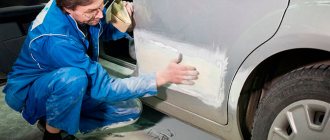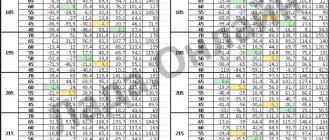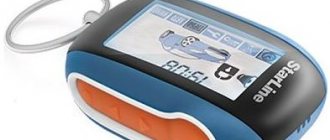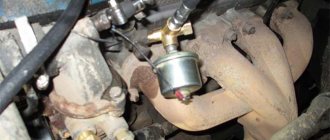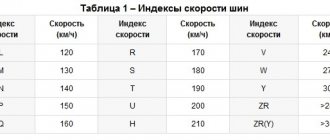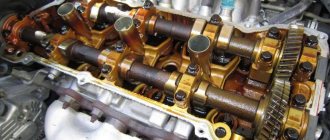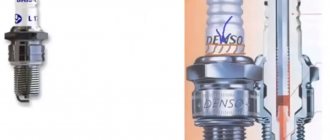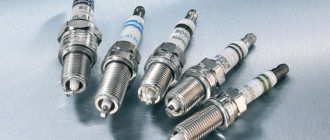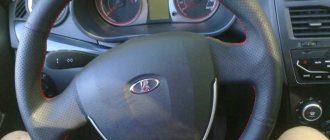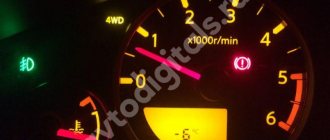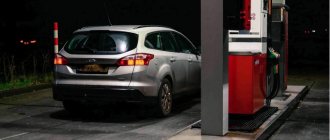In cold weather, car windows are often covered with a crust of ice, sometimes very thick. Removing it with a scraper takes a very long time and there is a possibility of scratching the surface if the icing is too strong. For this purpose, there is a special chemistry that allows you to quickly melt the ice. In this regard, we present to you the rating of the best car window defrosters for 2022. It includes the most effective products from domestic and foreign manufacturers in different price categories.
3ton
The 3ton glass defroster is perfect even for severe frosts. It does not lose its properties even at very low air temperatures. The product is quick and easy to apply. It does not leave marks and does not damage the paintwork if it accidentally gets on it. For the composition to take effect, usually only five minutes or a little less is enough. It perfectly removes thin ice crust. Thicker ice will have to be removed with a scraper. But doing this will be much easier and faster than without processing. To defrost, only a small amount of the drug is needed. Therefore, it lasts for a long time. And it costs about 100 rubles.
YAKU1658
Hi-Gear
Winter glass cleaner , Russia
Approximate price, rub. 190
Specified volume, ml 473
The result is as expected: in the simplest cases, with light frosts, it will help a little, but in severe frosts it will be of no use. Although the liquid retained its fluidity at -30 ºС - that’s not bad.
Liqui Moly Antifrost Scheiben-Enteiser
Liqui Moly Antifrost Scheiben-Enteiser car glass deicing agent removes even heavy icing very easily. It can be used not only for cleaning glass, but also for side mirrors, removing ice from headlights and lanterns. The drug acts incredibly quickly and effectively. A very small amount is usually required for processing. It applies very easily. The defroster does not cause any harm not only to the paintwork, but also to the rubber or plastic parts of the car. It costs around 250 rubles. This is not the lowest price for such chemistry. But the composition is worth it. After using it, as a rule, you do not have to work with a scraper.
miniatura799–1
When rain and frost come together in a duel, the losers are usually the car windows. Even if you get into an icy car and start the engine, you will not be able to leave: there is no visibility. Having the windshield wipers pulled up in advance won't do any good - you'll only damage the rubber bands. It’s a little easier for owners of cars with a heated windshield, but electricity won’t help instantly either. In general, you will have to grab a scraper or... That’s what we’ll talk about “or”.
Hi-Gear Windshield De-Icer
Hi-Gear Windshield De-Icer fluid is quite expensive for this type of automotive chemical. But its effectiveness is incredibly high. It helps remove even heavy frost in just a few minutes. However, in particularly difficult cases, you will still have to remove the remaining ice with a scraper. The drug is economical and versatile. It can also be used to defrost car locks. Here it works no worse than means specially designed for this. The composition is safe for humans and does not cause any harm to car parts and paintwork. It leaves no marks on the surface. The defrost is often counterfeited, especially at the height of the season, so you should buy it in trusted places or in advance before the onset of winter. It costs approximately 300-350 rubles.
Rating of the best windshield defrosters
Products for removing ice from glass are produced by most auto chemical manufacturers. Which car window defroster is best to buy? The rating of nine defrosting products presented below will help you figure it out.
Astrohim Anti-ice
Astrohim glass defroster is an alcohol-based composition designed to remove ice at temperatures down to -50 °C, as stated by the manufacturer. In practice, it does retain high fluidity at -30 °C and sprays normally. The effect is achieved through a combination of isopropanol and monoethylene glycol. The composition is safe for paintwork, chrome car parts, rubber seals and windshield wiper blade elements.
Application: Sweep away loose snow with a brush, apply spray to the ice from a distance of 15–20 cm, wait 1–2 minutes and clean off the slurry, wipe the glass. Repeat if necessary.
- The main components are isopropyl alcohol >30%, monoethylene glycol 5–15%, dye, water;
- Form – spray;
- Volume – 500 ml;
- Price – 250 rubles;
- Article – AC-135;
- Country Russia.
1
- Pros:
- good frost resistance;
- high concentration of alcohols.
- Minuses:
- pronounced odor.
3ton glass defroster TH-522
The company 3ton has a glass defroster based on isopropanol and silicones, which has a good price-quality ratio. This windshield defroster in the form of a spray is very fluid and sprays normally at temperatures down to 15 degrees. The spray is not aggressive towards rubber and paintwork. Has a pungent odor, which is typical of most isopropyl alcohol-based deicers.
Application: apply evenly from a distance of 25–30 cm, remove after 1 minute.
- The main components are isopropyl alcohol, silicone 5–15%;
- Form – spray;
- Volume – 550 ml;
- Price – 180 rubles;
- Article – 40040;
- Country Russia.
2
- Pros:
- low price;
- does not damage paintwork and seals;
- high concentration of active substances;
- Minuses:
- Strong smell;
- Due to the presence of silicone, it may leave marks on clothing.
Fill-Inn glass defroster
The product from the Russian company Fill-Inn is an aerosol, which is positioned by the manufacturer as a defrost for windows and locks. The concentration of isopropyl alcohol in the cylinder is 30%, so the composition is effective in moderate frosts and a layer of ice up to 2-3 mm thick. The presence of a silicone additive allows you to use the product for defrosting locks, rubber seals, and also apply it for prevention as a de-icer. However, if it gets on clothing it may leave marks.
Application: Spray evenly onto the surface from a distance of 20–30 cm, wait 1 minute and remove the slurry using a water spray.
- The main components are isopropyl alcohol >30%, silicones 5–15%, propane-butane 15–30%;
- Form - aerosol;
- Volume – 520 ml;
- Price – 250 rubles;
- Article – FL091;
- Country Russia.
3
- Pros:
- high alcohol concentration;
- presence of silicones;
- possibility of defrosting locks;
- Minuses:
- Strong smell;
- silicone can leave stains on clothes.
Lavr De Frost
Lavr De Frost glass defroster is a composition based on isopropanol with glycol ether and a silicone additive. Can be used as a defrost for windows and locks, as well as a prophylactic agent to prevent them from freezing. The manufacturer claims that the spray does not freeze down to -80 °C; in practice, effectiveness remains until approximately -25 °C.
Application: Select the spray mode, apply from top to bottom onto the surface, wait 2 minutes, then remove the dissolved ice with a brush.
- The main components are silicone surfactants up to 5%, isopropyl alcohol, glycol ether, fragrance;
- Form – spray;
- Volume – 500 ml;
- Price – 300 rubles;
- Article – LN1302;
- Country Russia.
4
- Pros:
- high concentration of substances;
- frost resistance;
- defrosting locks;
- preventive effect.
- Minuses:
- the pour point is higher than stated.
Hi Gear glass defroster
Hi-Gear Windshield De-Icer is another aerosol marketed as a glass and lock defroster. The double effect of the composition is achieved due to the content of surfactants (the manufacturer does not name specific substances). Thanks to the high concentration of isopropanol, it quickly and effectively removes ice even in not very severe frosts.
The tube built into the sprayer provides a powerful jet that penetrates well into gaps, keyholes, etc. However, the composition is consumed faster than analogues in spray form. At temperatures below -5 ℃, the quality of atomization decreases, so it is better not to store the de icer defroster in the car all the time.
Application: Sweep away excess snow with a brush, shake the can, spray the contents from a distance of 20–30 cm. After thawing, remove the dissolved ice with a squeegee or cloth.
- The main components are isopropyl alcohol more than 30%, propellant 15–30%, surfactant.
- Form - aerosol
- Volume – 520 ml;
- Price – 250 rubles;
- Article – HG5632;
- Country: USA
5
- Pros:
- high alcohol concentration;
- preventive effect;
- faint odor;
- versatility.
- Minuses:
- consumption is higher than that of sprays;
- in frosts below -5 °C it does not spray well.
AVS Anti-Ice AVK-126
Anti-ice AVS is a glass defroster from a Russian manufacturer of auto products, consisting of isopropanol, glycols and surfactants that provide a preventive anti-icing effect. The composition remains fluid in severe frosts (below 20 °C), and is effective against a thin layer of ice. In case of severe icing, you will have to help with a scraper.
Application: Spray the product onto the surface and wait 1-2 minutes. Remove any remaining ice with a scraper or brush. Wipe if necessary. To defrost the lock, inject the mixture into the well and wait 1–2 minutes.
- The main components are isopropyl alcohol from 30%, glycol up to 15%, surfactant up to 5%, water, dye;
- Form – spray;
- Volume – 500 ml;
- Price – 300 rubles;
- Article – A78242S;
- Country Russia.
6
- Pros:
- good concentration of alcohols;
- presence of surfactants.
- Minuses:
- the water base prevents the fight against thick ice;
- pronounced odor.
Sonax Scheiben Enteiser
Sonax is a car window defroster based on a mixture of isopropanol with ethylene glycol and glycerin. The product can also be used to prevent icing. Citrus flavoring does a good job of masking the smell of isopropanol. Due to the presence of water in the composition, Sonax Scheiben Enteiser works well in moderate frosts, but becomes thick at temperatures below 10 degrees.
Application: Spray evenly onto the glass and wait for the ice to loosen, repeat application if necessary. After thawing, remove the ice with a brush. For prevention, apply a thin layer on clean glass.
- The main components are isopropyl alcohol >30%, glycols 15–30%, water >30%, surfactant up to 1%, dye up to 1%;
- Form – spray;
- Volume – 500 ml;
- Price – 250 rubles;
- Article – 331241;
- Country: Germany;
7
- Pros:
- good concentration of alcohols;
- pleasant smell despite the presence of isopropanol.
- Minuses:
- at -20 °C and below it thickens.
Michelin glass defroster
Michelin glass defroster, according to its creators, is effective down to -40 °C and is safe for wiper blades. The composition uses ethyl alcohol, which is low-toxic and less aggressive to various materials. In practice, the spray works well only in moderate frosts (down to -10 °C), since the concentrations of the active substances are low.
Application: Spray the spray, wait for action and clean the surface.
- The main components are ethanol (5–15%), ethylene glycol (5–15%), water, dye;
- Form – spray;
- Volume – 650 ml;
- Price – 400 rubles;
- Article – 31319;
- Country: France.
8
- Pros:
- faint odor;
- large volume.
- Minuses:
- average concentration of active ingredients;
- low threshold for impact on ice;
- more expensive than analogues.
Grass Defroster
Glass and lock defroster Grass Defroster is a spray based on ethylene glycol and isopropanol. It has a moderate odor and copes with ice in frosts down to about 15 °C, but it is difficult to dissolve a thick layer. Therefore, it is recommended to use the Grass car window defroster only in temperate European climates. For a server, the composition is not concentrated enough; it contains a lot of water, which increases the freezing point.
Application: Spray onto the surface and wait 1-2 minutes. Remove any remaining ice with a scraper or brush. To defrost the lock, inject the composition into the well and wait 1-2 minutes.
- The main components are ethylene glycol 5–15%, up to 5% isopropanol, water from 30%;
- Form – spray;
- Volume – 500 ml;
- Price – 280 rubles;
- Article – 170105;
- Country Russia.
9
- Pros:
- moderate odor;
- glass and lock defroster 2 in 1;
- Minuses:
- not suitable for severe frosts.
ABRO Windshield De-Icer
The ABRO Windshield De-Icer auto glass defroster is quite expensive, but incredibly effective. It is able to separate ice from glass, even if it has not completely melted. The product quickly turns icing into a paste, which can then be easily brushed off. It's economical. A small amount of the product is usually required to remove ice dams. The drug is harmless to the paintwork and does not leave any streaks on the glass. It is famous for its very fast action and safety of use. It can't be called cheap. But with high efficiency, the cost of 300-350 rubles is quite justified.
YAKU1664
GUNK De-Icer
Window defroster, USA
Approximate price, rub. 250
Specified mass, g 340
The overseas can generally passed the test, although it required vigorous shaking. But using an aerosol is inconvenient, especially at -30 ºС. The icy metal tends to burn your hand with cold, and the trickle of the drug is modest.
BBF
Anti-ice for glass BBF has a very simple composition and a relatively low affordable cost. At the same time, its efficiency is quite high. The product quickly removes snow and ice. It can be used not only on glass, but also on side mirrors and lighting devices. It is safe, does not damage paintwork and does not leave any streaks or marks on the surface. Processing time is only a few minutes. The composition is economical; very little of it is required to remove even heavy icing. It costs about 200 rubles.
Reviews from car owners
Regarding window defrosters, motorists' opinions are divided. Some drivers prefer traditional methods of removing compacted snow and ice, such as using brushes and scrapers. Other motorists actively use the anti-tilt.
Almost all reviews, regardless of whether the motorist belongs to one or another “camp,” note several pros and cons of glass defrosters:
- Simplifying the glass cleaning procedure from a physical point of view. Even if the defrost does not melt the ice completely, it makes the crust thinner and more pliable when cleaned with scrapers and brushes.
- Improved protection of glass from mechanical damage. The fact is that glass inevitably receives microdamage when cleaning with scrapers. “Anti-ice” significantly reduces the mechanical load on the glass and reduces the likelihood of scratches when removing ice formations.
- Safely and quickly separates frozen wipers from the windshield. For some motorists, it was this advantage that became decisive in the question of whether or not to use “antildo” for glass.
- Car owners who actively use the Anti-Ice product claim that during the winter, depending on the region, an average of 2 to 5 bottles of the composition are consumed. And this adds up to a considerable amount, considering that the expenses went exclusively to the glass defroster - a car chemical product of secondary importance.
A glass defroster will definitely simplify the procedure for cleaning car windows, mirrors and headlights from ice. However, its effectiveness is often overestimated by the manufacturer. Therefore, you should not expect that “anti-ice” will quickly and effectively melt a thick ice crust.
Grass "Anti-ice"
The Grass Anti-Ice defroster is quite inexpensive and has a number of advantages. It significantly facilitates the removal of ice and is quite effective in combating minor icing. If the ice crust is strong, you will still need a scraper to completely remove it. The product cannot boast of incredible speed of action, but it is good in terms of quality and price. At the same time, it is practically not counterfeited. The product smells pleasant, does not leave any marks on the glass and does not harm the paintwork. It costs between 150-250 rubles. It is considered quite economical, but if there is heavy ice, a large amount of compound may be required or you will have to actively help yourself with a scraper.
YAKU1665
2–4. SAPFIRE
Antilyod, Russia
Approximate price, rub. 170
Specified volume, ml 500
In light frosts, the drug is suitable as an apprentice: it will melt slightly frozen glass. But at double-digit negative temperatures, you can leave it alone - the scraper is definitely more useful.
Expert
Expert is very expensive, but it fully lives up to its name. It is a true expert in fighting ice. Just five minutes is enough to melt even a thick crust of ice. The drug fights small ice much faster. In this case, you practically won’t have to use a scraper. The defroster is applied very easily and quickly, practically without getting on adjacent parts, as it has a convenient sprayer. It is safe for humans and does not harm the paint on the car body. The composition does not leave any traces behind. Its only drawback is that it may become ineffective after being exposed to the cold. Therefore, the bottle with the drug should not be left in the car for a long time. In addition, its cost seems very high to many car enthusiasts. It costs about 350-400 rubles.
Homemade anti-freeze
Take 1 tbsp. l. glycerin per 10 tbsp. l. denatured alcohol Rub the glass thoroughly with this mixture. And then wipe dry with a soft cloth. This procedure can also be done to prevent glass from icing. You can also wipe the windows inside the car with it - they will not fog up.
You can use another method. Take 1 tbsp. l. turpentine, 3 tbsp. l. glycerin and 5 tbsp. l. colorless liquid soap. Everything is mixed and the glass is wiped. As in the first case, this recipe is also suitable for preventing the formation of ice. Just don’t use a solution of regular soap instead of liquid soap.
We recommend: Replacing valve stem seals on a VAZ 2109 car
If the thickness of the ice is quite impressive, then use this proven method. Pour rubbing alcohol into a regular spray bottle and add a little dish soap. Shake well and spray onto glass. The more of this product you spray on the ice, the faster it will melt.
Here's another way to make anti-freeze. Cheap vodka, triple cologne and water are taken in equal proportions. This mixture can be poured into the windshield washer reservoir. It smells like cologne and can withstand temperatures down to -40°C.
Ready-made products
. The range is very wide. Most often they come in aerosol or hand-held spray form. After spraying such products onto the ice, you need to wait a few minutes. Melted ice should be removed immediately by hand or with a rubberized scraper. Be careful if this product contains methyl alcohol. Spray it only downwind. Also avoid getting it on your skin - methyl is poisonous.
Remember that there are also universal products for defrosting car windows and locks on sale. It is worth considering that they contain oil. There will most likely be streaks on the glass. It’s up to you to decide whether to buy a ready-made product or choose a way to make a car window defroster (anti-ice) with your own hands. In any case, the process of melting ice will become much easier and faster.
Car owners in winter very often do not bother to put on warm clothes - the car is in the yard or in the nearest parking lot. You just have to turn on the heater, brush off a light layer of snow with the wipers, and within a minute you can go about your business in warmth and comfort.
But it happens that last night it rained with snow, which froze thoroughly overnight. The glass is covered with an ice crust that completely blocks the view. The problem needs to be solved quickly - you have to be at work before your boss, and the frost is making itself felt. So, open the trunk and find the following items there.
1. Ordinary plastic scraper
. Some people consider this inexpensive, standard cleaner to be extremely dangerous on glass as it can scratch the fragile surface. On the other hand, hundreds of thousands of drivers every morning refute this popular opinion - the pressing force must be inhuman.
Alternatively, you can use calcium chloride or alum. The disadvantage is that you always need to carry liquid with you, which can freeze itself. Or the solution must be very concentrated.
The most extreme option is to rub the surface of the glass with pure table salt. You should be very careful - the glass can be severely scratched.
Saline solution
4. Laundry soap.
Another popular folk remedy for fighting ice. Recently, it has been rapidly losing its former popularity.
Laundry soap
5. CD.
If there is absolutely nothing in the trunk, and you need to drive quickly, a disc from the radio will help save the situation. Most likely, its surface will be damaged and it will no longer be possible to use it for its intended purpose. In addition, it consists of a fairly fragile material. With active use, the disc may burst, fragments can injure the driver and scratch the glass. It is better not to use this method often. But as an option for one time, it is quite possible to consider.
We recommend: When, according to the law, should we change summer tires to winter tires in 2022?
6. Anti-ice cover.
Not the most popular method, because you have to stretch it over the surface of the glass in advance and remove it before each trip. There are approximately equal numbers of supporters and opponents of this method.
Anti-ice cover
7. Winter glass washer.
If there is a washer in the trunk, you can pour it on the glass - the chemical reaction will melt the ice faster. If you can’t find the coveted bottle, you can try to borrow some from the washer reservoir. Of course, if possible.
Winter glass washer
8. Vodka, alcohol, moonshine.
An excellent alternative to washer are strong drinks that do not freeze even at very low temperatures. The ice will go away much faster. Negative consequences of use may occur after a meeting with a traffic police inspector. Due to his duty, he can easily distinguish ethyl alcohol from technical liquids. After which he will be forced to ask several additional unpleasant questions. Although many are not worried about this and even use moonshine instead of winter washer fluid.
Ethanol
9. Modern “advanced” drivers use special glass defrosters
. Essentially, it is alcohol production waste with some additives. They produce “anti-ice” or “deacer” in the form of a spray bottle. All that remains for the driver is to generously spray the icy surface. After five minutes, turn on the wipers to remove the slurry of snow. The convenience of this method is minimal exposure to the cold and no need to work with a scraper.
Glass defroster
10. Direct jets of hot air from hair dryers, burners, electric stoves,
It is also highly not recommended to pour boiling water over the glass - a strong temperature difference will most likely cause the fragile surface to crack. And these are correspondingly significant costs.
Cracks due to temperature changes
11. If the glass is frozen from the inside, it is not advisable to touch it - stains will remain, which are not at all easy to get rid of. The only option is to direct warm (not hot) air onto the ice
and wait. In order to avoid this trouble, before parking, open the windows and wait five minutes for the temperatures in the cabin and outside to equalize.
In principle, the airflow should be turned on immediately after the car is started. While the car is warming up, the air warms up and little by little helps in the fight against ice crust. The main thing is that the flow is not too hot - a large crack is not the best gift for a car enthusiast.
SINTEC
The SINTEC defrost is considered very effective, easy to use and safe for people. It works great even at very low temperatures. The composition is able to remove even severe ice in just a few minutes, practically without the use of a scraper. It removes ice even from hard-to-reach places and small cracks. After using the product, a special colorless film remains on the surface, which prevents the rapid appearance of a new ice crust. At the same time, no stains, streaks or glare appear on the glass. The drug does not spoil the paintwork of a car and does not harm rubber and plastic products in case of accidental contact. Its average cost is about 200 rubles.
How to make anti-ice with your own hands
As it became clear from considering the mechanism of action of industrial compounds, there is nothing particularly complicated about them. That is, it is quite possible to make an acceptable product yourself.
To prepare the mixture, you can use the same substances - alcohol and detergent or protective agent. For example, ethanol and glycerin.
Here, the use of ethyl alcohol is quite acceptable from the point of view of personal safety and prevention of abnormal use. However, isopropyl alcohol, which is part of window glass cleaning liquids, will work just as well.
Glycerin can be replaced with kitchen detergents. One part glycerin or dishwashing detergent to nine parts alcohol is sufficient. It is not necessary to add water.
You can spray the pre-prepared mixture from an already used trigger spray. The recipe will work no worse than the store-bought composition, but will cost much less. Thick ice crusts will require several sprays.
ASTROhim
ASTROhim works great even in very cold weather. It quickly and effectively removes even thick layers of ice, for example if the car has not been cleaned for several days. It will only take a few minutes to remove light ice. If there is significant icing, a scraper may be necessary, but the product still noticeably speeds up the cleaning process. It is very economical and easy to use. One bottle lasts a long time. Does not damage paintwork, but smells strongly of alcohol. A domestically produced defroster costs approximately 200-250 rubles.
YAKU1662
Eltrans
Glass defroster , Russia
Approximate price, rub. 75
Specified volume, ml 210
At -10 ºС, the aerosol preparation honestly tried to work as intended, and after vigorous shaking it even succeeded. But at -30 ºС, physical exercises no longer helped: even the pimple that should be pressed froze.
LAVR De Frost -80 °С
The Russian product for defrosting car windows LAVR De Frost -80 °C is very effective even at extremely low temperatures. It instantly acts on a frozen surface and very quickly melts even very strong ice. The drug is much more effective even than many well-known foreign analogues. At the same time, very little composition is needed for processing. Therefore it is very economical. The use of a scraper when using this defrost is not necessary. The chemical protects the glass from scratches and leaves no marks, streaks or stains. It does not harm the car's rubber elements or paintwork. The composition is also harmless to humans in case of accidental contact with the skin. Such a defroster costs about 250 rubles. Its price is quite justified for such an effect. By the way, the drug can also be used to clean lock cylinders and car optics.
How is it different from windshield washer?
Windshield washer is a liquid for cleaning the windshield from dirt that gets on it. There are two types: winter and summer.
Winter windshield washer is designed to solve the problem of cleaning the glass surface during the cold season. It is produced on the basis of methyl, ethyl or isopropyl alcohol, sometimes on sale it can be seen on the basis of monoethylene glycol.
Unlike anti-ice, a windshield washer cleans the windows and headlights of debris. This liquid is poured into the windshield washer reservoir, then sprayed through special nozzles and cleaned off by the wipers.
LAVR Winter -30°
The Russian universal defrosting agent LAVR Winter -30°C perfectly helps to get rid of snow, frost and ice even at very low ambient temperatures. In just a few minutes, it perfectly dissolves even heavy ice. The defroster can be used not only on glass, but also on mirrors, headlights, lanterns and registration numbers. For maximum cleansing, only a small amount of the product is needed. It is not necessary to use a scraper for cleaning. The composition is economical and convenient. It can be added to the reservoir to dilute the windshield washer fluid if its freezing point is quite high. It will quickly melt the frozen “anti-freeze”. In addition, chemicals can also be used by non-motorists in everyday life, for example, to clean windows. It is safe, does not harm plastic and rubber products, does not damage car paint and does not leave any marks behind. The average cost is approximately 250 rubles.
Composition and principle of action
The vast majority of modern glass defrosters consist of several active components.
- Alcohols. The most commonly used is isopropyl alcohol, the same as in winter windshield washer fluids. This alcohol is an excellent solvent that effectively penetrates the pores of the ice crust. Some other alcohols are capable of undergoing isothermal reactions with water, that is, reactions that release heat. The thermal output during these reactions is small and will not allow the glass to suddenly heat up to critical temperatures.
- Aliphatic hydrocarbons. These are compounds of carbon, hydrogen and some other substances without the formation of benzene rings. Depending on their position in the homologous series, they have different solvent properties.
- Propylene glycol ether. It is also an effective solvent that is widely used in the production of various water-based substances. Actively used in the manufacture of industrial cleaning products. It plays the role of a dispersant in glass defrosters.
- Other active components designed to increase the surface activity of basic substances, accelerate isothermal reactions and more effectively penetrate through the pores in the ice crust for active melting.
Some manufacturers do not indicate the exact composition of their products, but only indicate the general affiliation of the components to a particular group of chemicals.
The operating principle of all defrosters is combined. First, warming up the ice crust. Secondly, its dissolution and division into as small areas as possible and separation from the surface of the glass. And thirdly, cleaning the glass from dirt.
Nextzett Anti-Frost
Nextzett Anti-Frost is a product with unique properties and characteristics. It melts and removes even heavy snow and ice almost instantly. For an amazing effect, a small amount of the drug is required, and the use of a scraper is not necessary. The composition perfectly protects the surface from subsequent icing for some time. In addition to icing, it perfectly removes various stains and dirt, even very complex and difficult to remove, from glass. This provides long-lasting protection against glare. The defroster can also be used on car headlights and lanterns, and side mirrors. It is invisible on the surface. After use there are no stains, streaks or other traces left. The drug does not harm paintwork, rubber and plastic products. It is safe for human health, since its main component is ethyl alcohol. The only disadvantage of this chemistry is its inaccessibility in Russia and its high cost. But at the same time, the product is practically not counterfeited.
There are also many other means for defrosting glass on the Russian market. Motorists consider some of them quite effective. But their popularity is much less than that of the compositions presented in the list. And some car owners even prefer to prepare such drugs themselves according to recipes presented on the Internet. But their effectiveness and safety have not been tested.
Now you know which car window defrosters were recognized as the best in 2022. Are you familiar with these tools? What defroster do you use? How effective is your product? If you have questions or want to tell us something interesting on the topic, write in the comments.
Which car window defroster to choose?
Compositions for removing ice from car windows are mainly made on the basis of monohydric (ethanol, methanol, isopropanol) and dihydric (glycols) alcohols. The use of these substances is due to two factors:
- Frost resistance . The freezing point of most alcohols used, even in solution with water, is noticeably below 0 °C.
- Exothermic dissolution . Many alcohols release heat when dissolved in water, which increases the efficiency of the defrost.
The freezing point of a liquid and the amount of heat released during dissolution directly depend on the concentration of alcohol in it. For example, a solution of 20% ethyl alcohol in water freezes at -9 °C, and 72% only at -50 °C. Accordingly, it is better to choose a defrost with a higher content of the main active ingredient .
At concentrations less than 50%, methanol shows the best frost resistance, but since this alcohol is much more toxic than ethanol and is practically odorless, its use for automobile fluids is prohibited in the Russian Federation to avoid poisoning. Therefore, the most common defrosters are those based on isopropanol.
, which is also quite toxic, but has a strong unpleasant odor.
The second factor that must be taken into account when choosing a liquid for defrosting glass is the release form. The most common are aerosol and spray, each of which has its own pros and cons:
Glass defrosters in spray and aerosol form
- Aerosols . They are contained in a pressure cylinder, so they penetrate better into cracks and can cope with the defrosting of the lock. The solvent in this case is liquefied gas, so there is practically no water in them, which ensures a high concentration of active substances. Disadvantages - they cool when sprayed, and butane, usually used as a propellant, does not evaporate at subzero temperatures. Therefore, it is not advisable to constantly store aerosol cans in the car in winter. It is better to keep an aerosol glass defroster at home and take it into the car only before a trip.
- Sprays . Sprays due to the user's effort pressing the trigger. They are not prone to freezing and spray well in moderate frosts (down to -20 °C), so you can always keep them in your car. Often, glass defrost spray is cheaper than aerosols, which is also a plus. The main disadvantage is the use of water as a solvent, the presence of which increases the freezing point of the active substance, thereby negatively affecting the effectiveness of the product.
In addition to the active substance and its concentration, when choosing a defrost, you should pay attention to the auxiliary components. The alcohols themselves dissolve ice by lowering the freezing point of water, but they quickly evaporate and do not provide a protective effect against re-freezing. To achieve this, manufacturers often use silicone and surfactants that form a water-repellent film on the surfaces being treated.
The smell of glass defrosting agent is a negative point that also needs to be taken into account. Liquids based on isopropanol have a particularly strong smell. The absence of a pronounced odor indirectly indicates a low alcohol concentration or the use of cheaper methanol . Therefore, if you need an effective defrost, you will have to put up with the presence of an unpleasant alcohol aroma, albeit masked by fragrances.
Types of defrosters
Car enthusiasts and sellers refer to all defrosters in one word - “anti-freeze”. However, you should know that they differ in the type of impact.
There are two types of defrosters:
- Warning. These products are used to prevent the formation of ice crust. This includes products from the “anti-ice” series.
- Destroying ice. Designed to defrost and remove already formed ice crust from glass and housing, without the risk of damaging them.
To avoid misunderstandings, it is always worth clarifying what type of impact the car enthusiast has in mind in order to avoid misunderstandings and disappointment.
Car enthusiasts should know that there are also key defrosters and universal ones. Universal ones are suitable for both locks and glass.
Some car enthusiasts prefer to make a glass defroster with their own hands. However, they are generally of lower quality than factory-produced products. After removing ice with homemade compounds, stains and stains remain.
Method No2
An option for those who can get somewhere on their own and leave the car for a while, going to solve their personal affairs.
The method is also good and safe, since direct intervention in the injectors is not required.
The idea is to leave the car in a warm place. It could be:
- underground parking;
- garage;
- closed parking;
- warm box;
- shopping center parking;
- warehouse space;
- hangar;
- factory workshop;
- enterprise object, etc.
The most important thing is that the temperature is above zero. And the higher it is, the faster the frozen liquid will begin to thaw.
If there are no such warm places at your disposal, then move on to the next method.
What are the dangers of foggy windows?
Foggy windows can result in a hefty fine for the driver. Many people underestimate this fact and do not ensure good visibility while driving, which can lead to serious consequences. Unfortunately, some of us stick to the minimum, exposing only the front of the glass, thinking that the rest of the ice will melt and disappear on its own. This is very irresponsible behavior. The fine for endangering road safety can range from 1,450 hryvnia and entail the accrual of penalty points. The layer of ice and snow from the hood or roof of the car must also disappear before you set off. The police will not listen to any arguments, for example, about the lack of appropriate equipment.
Safe ways to defrost car glass in winter
What does a driver usually do in the absence of a scraper and other means? There is nothing left to do but warm up the window with the cabin heater. Long, but reliable: the stove warms up the interior for 15-20 minutes and the glass thaws safely. The main thing is to direct the air flow to the central air ducts or downwards, otherwise there is a risk of getting a crack in the windshield. But what to do when there is no time for full warm-up?
As an option, cover the frontal area with a sheet of cardboard or a car blanket, pressing it with the wipers. The method is unattractive, but effective. In the morning, just remove the “protection” and the car is completely ready for the trip. In fact, this is one of the fastest ways to get started. But we recommend that you abandon such an idea and spend at least five minutes warming up the engine and interior. Firstly, the glass will not fog up from the inside, and secondly, a warmed-up engine does not care about normal loads.
Let's leave the exotic and return to the usual methods of removing morning ice. An alternative to scraping is chemical preparations. These are various types of defrosters or so-called “defrosters” and solutions prepared at home.
Branded glass defroster
The operating principle of the defroster is based on thawing ice under the influence of alcohol. The labels promise to melt the ice in literally 3-5 minutes, after which the remaining sludge can be removed with a cloth or wiped off with wipers. The classic composition of such a liquid can be read on the back side right in the store:
- Isopropyl alcohol.
- Glycerol.
- Surfactant
- Water.
There are quite a lot of tests and reviews about these drugs on the Internet. For example, Za Rulem tested the Russian assortment in mid-winter 2022. Domestic manufacturers of bitumen stain cleaners, already known to us in the technology of scrubbing bitumen from a car body, won. We present the final score below:
- Agat Multispecies.
- ASTROhim AC-135 Anti-ice.
- Grass Anti-ice.
- AVS Crystal AVK-126.
- Eltrans EL-0604.02.
This is interesting: Signs and causes of car alternator malfunction
Liqui Moly and Pingo, well-known in the segment of antifreeze fluids for cars, showed so-so results, which is why they are not recommended for purchase. The editors also noted that trigger designs (a bottle with a spray) are better than their canned counterparts. The difference is especially felt in severe frost, when isopropyl alcohol becomes more viscous and has difficulty flowing through the nozzle hole. The advantage of bottle filling is that you can throw the sprayer on the edge and simply pour the glass from the neck.
Homemade defroster from winter washer fluid
The experience of using a regular anti-freeze for defrosting purposes is wandering around the network. The result of manual use of a winter washer, it must be admitted, is so-so. The fact is that many antifreeze liquids do not include one important component that is present in the defroster - glycerin.
Why do you need a glycerin supplement? Alcohol tends to evaporate, and the defroster needs to remain on the glass surface for at least two minutes. During this time, the concentration of the main component, isopropyl, should not change downward, that is, the alcohol should not decrease. Otherwise, the result will be completely the opposite effect - the anti-freeze will leave only water, which will immediately freeze on the glass.
Glycerin retains alcohol, which means it is an essential component of either a homemade potion or a store-bought drug. To obtain a homemade composition, it is enough to add glycerin to the winter washer fluid at the rate of 1-2% of the volume of the final container. It makes absolutely no difference what kind of washer is used as a preparatory component - homemade or store-bought, immediately ready for use, or a concentrate that requires the addition of distilled water.
The main note is to take into account the crystallization temperature of the antifreeze. If the alcohol concentration is insufficient, even the drug diluted with glycerin will not be able to melt the ice.
Hot water
Under no circumstances should you use this method. If your glass is not fresh from the factory, then most likely it has microcracks. Any water that gets into them will definitely freeze. Since water expands when it freezes, the cracks will become larger. If you repeat this procedure several times, then in the near future your windshield will be decorated with a huge crack, or even several at once. Buying and replacing a windshield will cost you much more than glass defrosting products. As a last resort, use warm water and wipe the glass very thoroughly. You can apply hot heating pads, but to be honest, this method is not effective either, due to its small area.
This is interesting: Causes of valve knocking on a cold engine and how to eliminate them
Ethanol
You can use a liquid containing ethyl alcohol in sufficient concentration. The solution is applied evenly for a couple of minutes and then the remaining ice must be removed with a rag. Both technical and food grade (ethyl) alcohol are suitable. Usually, hawthorn tincture is purchased at the pharmacy for such purposes. But in general this is not important; any alcohol-containing solution will do.
Antifreeze + alcohol
Often they simply spray “anti-freeze” on the glass, although it is only suitable in cases of light frost, otherwise it will only get worse. This liquid is an aqueous solution of isopropyl. In fact, it is designed not to freeze quickly, but only on already WARM glass, while cleaning in motion. So, if you try to remove the snow, it will only turn into a dense ice crust. It is better to supplement this product with C₂H₅OH concentrate.
Alcohol + water + glycerin
Mix any alcohol (technical, formic, homemade) with plain water in a 2:1 ratio. Season the whole thing with a few milliliters of glycerin (the same 1-2% of the final volume of the resulting composition) and pour it into a spray bottle - the product is ready for use.
Translating the recipe into a practical plane, you can use the technique of our editorial guest - auto mechanic Evgeniy P. He suggests using the remaining glass cleaner and a medical preparation:
- Pour 100 ml of window cleaner into a special container.
- Add 200 ml of hawthorn tincture.
- Mix well.
Salt based solution
Pour regular tap water into a liter container, add 6-8 tablespoons of regular salt, mix well. Treat frozen glass using a spray bottle. This product reliably corrodes ice at any sub-zero temperature.
How to use
When using industrial anti-ice and defrost, you should carefully follow the instructions supplied with the product by the manufacturers. If you follow everything, there will be no problems using transport in winter.
The car owner should always remember that:
- Homemade defrosting solution must be tested before use.
- A preventive anti-icer is applied in advance - this will save time on heating and cleaning the vehicle.
- Windshield wiper blades should also be treated with a preventative aerosol to prevent them from freezing.
- To avoid washing off the protective film, treated surfaces should not be washed with car shampoo.
- If you use a defrosting composition, you will have to work with it every morning. It does not prevent the formation of ice.
- The thicker the ice on the surface, the slower the car defroster works.
Unconventional ways to deal with frozen windows
There are several more effective ways to deal with frozen windows. Here are some suggestions.
- Alcohol and water is a very simple method that requires you to mix water and alcohol. It is important to apply this mixture to glass that is still frozen for best results. To further prevent your car windows from fogging up, just spray alcohol on the inside of the windows.
- Vinegar with water - for the best effect, make a ratio of 3:1. Placed on glass, it will quickly defrost ice. This is also a proven method for people who park their cars outdoors. It is enough to wipe the car windows overnight with just vinegar, and ice will not settle on them. Vinegar should be applied very carefully so as not to damage painted surfaces.
- Warm water seems quite primitive, but it is very effective. Make sure the water is not too hot as it may damage the windows. Ice filled with water will quickly dissolve, so it can be quickly removed with a brush.
- Closing the windshield at night - stores sell special mats that cover the windshield. It is her scraping of ice that takes the most time. Place the rugs on the outside of the rug. You can use an old blanket or towel as a replacement.

